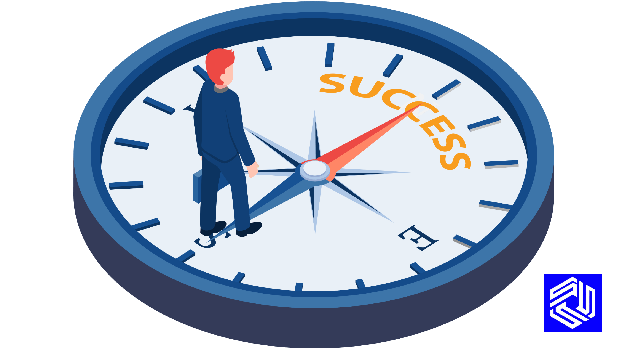SaaS Metrics: The Key to Understanding Your Company's Financial Health
The Software-as-a-Service (SaaS) model has become increasingly popular in recent years, allowing businesses to access software and applications through a subscription-based service, rather than purchasing and installing the software on their own hardware.
However, as with any business model, financial health is crucial for the long-term success of SaaS companies. Understanding the key financial metrics that drive a SaaS business is essential for making informed decisions, planning for growth, and ensuring profitability. In this blog post, we'll explore the importance of SaaS metrics for understanding your company's financial health and achieving sustainable success.
We will cover the following:
- Key SaaS Metrics
- Understanding Financial Health through SaaS Metrics
- How an External Business Management Software Can Help
- Best Business Management System

Key SaaS Metrics
SaaS (Software-as-a-Service) metrics are key performance indicators (KPIs) that are used to measure the financial health and success of a SaaS company. These metrics provide insights into various aspects of the company's performance, including revenue, customer acquisition and retention, marketing and sales effectiveness, and overall business efficiency.
There are several key metrics that SaaS companies need to track to understand their financial health. Here are the definitions of these metrics and how to calculate them:
- Monthly Recurring Revenue (MRR): MRR is the amount of revenue generated by your SaaS product each month, based on your recurring subscription fees. To calculate MRR, simply multiply the total number of paying subscribers by their average monthly subscription fee.
- Annual Recurring Revenue (ARR): ARR is similar to MRR, but provides a longer-term view of revenue potential by multiplying MRR by 12 months. ARR is important because it helps you to plan for growth and measure progress toward your goals.
- Churn Rate: Churn rate is the percentage of subscribers who cancel their subscriptions in a given time period. To calculate churn rate, divide the number of cancellations by the total number of subscribers during the same period.
- Customer Lifetime Value (CLV): CLV is the estimated total revenue that a single customer will generate over the lifetime of their subscription. To calculate CLV, multiply the average revenue per customer by the average customer lifespan.
- Customer Acquisition Cost (CAC): CAC is the cost of acquiring a new customer, including sales and marketing expenses. To calculate CAC, divide your total sales and marketing costs by the number of new customers acquired in the same period.
Understanding Financial Health through SaaS Metrics

It's important to track these metrics regularly and use them to make data-driven decisions about your business. By monitoring these metrics, you can identify areas for improvement, measure progress toward your goals, and make informed decisions about pricing, marketing, and product development.
Understanding the financial health of your SaaS business requires a deep understanding of the key metrics that drive your revenue and growth. Here are some ways in which you can use these metrics to assess the financial health of your business:
Using MRR and ARR to forecast revenue: Monthly Recurring Revenue (MRR) and Annual Recurring Revenue (ARR) are important metrics for forecasting future revenue growth. By tracking these metrics, you can identify trends in your revenue and make informed decisions about investments in marketing, sales, and product development. For example, if you notice a steady increase in MRR over several months, you may decide to invest in additional marketing and sales efforts to accelerate growth.
Monitoring churn rate to ensure customer retention: Churn rate is a critical metric for understanding the health of your customer base. By monitoring your churn rate, you can identify trends in customer satisfaction and retention, and make informed decisions about customer support, product development, and customer acquisition strategies. For example, if you notice a sudden increase in churn rate, you may decide to invest in additional customer support or product improvements to reduce customer dissatisfaction and improve retention.
Calculating customer lifetime value to assess revenue potential: Customer Lifetime Value (CLV) is an important metric for assessing the revenue potential of your customer base. By calculating CLV, you can identify your most valuable customers and develop strategies to retain and upsell them, while also identifying low-value customers and optimizing your acquisition and retention efforts. For example, if you notice that a small percentage of your customers generate a large portion of your revenue, you may decide to invest in additional retention and upsell efforts for these high-value customers.
Analyzing customer acquisition cost to determine marketing and sales effectiveness: Customer Acquisition Cost (CAC) is an important metric for measuring the effectiveness of your marketing and sales efforts. By analyzing CAC, you can identify the most cost-effective channels for acquiring new customers, optimize your marketing campaigns to reduce costs, and improve the ROI of your sales and marketing investments. For example, if you notice that your CAC is higher than the average revenue per customer, you may decide to invest in additional marketing and sales strategies to reduce your acquisition costs and improve profitability.
Understanding your SaaS metrics is essential for assessing the financial health of your business and making informed decisions about growth, product development, and customer acquisition and retention. By regularly tracking and analyzing these metrics, you can gain insights into the performance of your business, identify areas for improvement, and implement strategies to achieve sustainable growth and long-term success.
Common Mistakes to Avoid
While tracking and analyzing SaaS metrics is crucial for understanding financial health and making data-driven decisions, there are common mistakes that SaaS companies often make when using metrics. These mistakes can lead to inaccurate or incomplete data, which can negatively impact financial health.
One common mistake is not tracking the right metrics. SaaS companies may focus on metrics that are easy to measure, such as website traffic or social media followers, rather than metrics that are directly tied to financial health, such as MRR or churn rate. This can lead to a skewed understanding of performance and make it difficult to identify areas for improvement.
Another mistake is not tracking metrics consistently over time. SaaS companies may start tracking metrics but fail to do so consistently over time, making it difficult to spot trends or track progress. Without consistent tracking, it's also challenging to make accurate forecasts or set realistic goals.
A third mistake is not properly analyzing metrics. SaaS companies may track metrics but fail to analyze them in a meaningful way. This can lead to incorrect assumptions or conclusions and make it difficult to take action based on data.
These mistakes can have a negative impact on financial health. For example, not tracking the right metrics can result in missed opportunities for revenue growth or increased customer retention. Not tracking metrics consistently can lead to inaccurate forecasts or missed targets, while not analyzing metrics correctly can result in incorrect assumptions and misguided actions.
To avoid these mistakes, SaaS companies should first identify the metrics that are most relevant to their business and financial goals. They should then establish a regular cadence for tracking and analyzing these metrics, using tools and software to automate the process where possible. It's also important to have a clear understanding of what each metric means and how it can be used to drive decision-making.
By avoiding these common mistakes and using metrics effectively, SaaS companies can gain valuable insights into their financial health and make data-driven decisions that drive growth and success over the long term.
How an External Business Management Software Can Help

Business management software can be a powerful tool for SaaS companies looking to track and analyze key metrics to manage their financial health effectively. Here are a few ways that business management software can help:
- Automated tracking: Business management software can automate the tracking of key metrics, making it easier to monitor and analyze your financial health. With real-time data insights, you can identify trends, anomalies, and areas for improvement quickly and take immediate action.
- Customizable reporting: Business management software can generate customizable reports that allow you to drill down into specific metrics and data points to gain deeper insights into your financial health. This makes it easier to identify problem areas, optimize your strategy, and make informed decisions about pricing, product development, and customer acquisition and retention.
- Integration with other tools: Business management software can integrate with other tools, such as CRM systems, marketing automation software, and accounting software, allowing you to centralize your data and streamline your operations. This can improve efficiency, reduce errors, and give you a holistic view of your business performance.
- Forecasting and scenario planning: Business management software can help you forecast revenue and plan for different scenarios by analyzing past data and identifying trends. By using forecasting and scenario planning tools, you can develop a more accurate picture of your financial health and plan accordingly for future growth or challenges.
Business management software can be a valuable tool for SaaS companies looking to master their financials by tracking and analyzing key metrics. By automating tracking, customizing reporting, integrating with other tools, and using forecasting and scenario planning, you can gain deeper insights into your financial health, make informed decisions, and achieve sustainable growth and success in the competitive SaaS market.
Best Business Management System
There are many business management systems available, each with its own strengths and weaknesses. The best system for your SaaS company will depend on your specific needs, budget, and business model. We would like to recommend Skhokho Business Management Software.
Skhokho Business Management Software is a cloud-based business management solution that offers a suite of tools for managing various business operations, including finance, HR, CRM, and project management. It includes features for tracking revenue, expenses, and financial metrics. Skhokho also provides customizable reporting, forecasting, and CRM tools to help you make informed decisions about pricing, product development, and customer acquisition and retention.

One of the advantages of Skhokho Business Management Software is its scalability. It's designed to support businesses of all sizes, from small startups to large enterprises. It also offers a range of integrations with other popular software tools, project software, accounting software, and Sales & CRM software.
You can also use The Skhokho OKR App to set, track and manage your SaaS Metrics.
Skhokho Business Management Software appears to be a comprehensive and flexible solution for managing various aspects of your SaaS business. However, it's important to evaluate all options and choose the system that best fits your specific needs and budget. It's recommended to compare and contrast different systems and choose the one that best suits your business requirements.
Get Started
If you're interested in using Skhokho for your Saas Metrics needs, you can sign up for a 14 day free trial. Take advantage of the trial to see how Skhokho can help you improve your saas performance and grow your small business. For guidance on how to use the system check out their documentation and YouTube tutorial videos.
Conclusion
In the competitive and ever-changing SaaS market, it's crucial to have a clear understanding of your financial health to make informed decisions that will lead to long-term success. By prioritizing SaaS metrics tracking and analysis, you can achieve sustainable growth, improve customer satisfaction, and stay ahead of the competition.
In conclusion, SaaS metrics are essential for understanding the financial health of your SaaS company. It's important for SaaS companies to prioritize tracking these metrics regularly to ensure long-term success. By monitoring these metrics, you can identify trends, anomalies, and areas for improvement, and take immediate action to address them. Additionally, business management software can be a valuable tool for automating tracking, customizing reporting, integrating with other tools, and using forecasting and scenario planning to gain deeper insights into your financial health.









